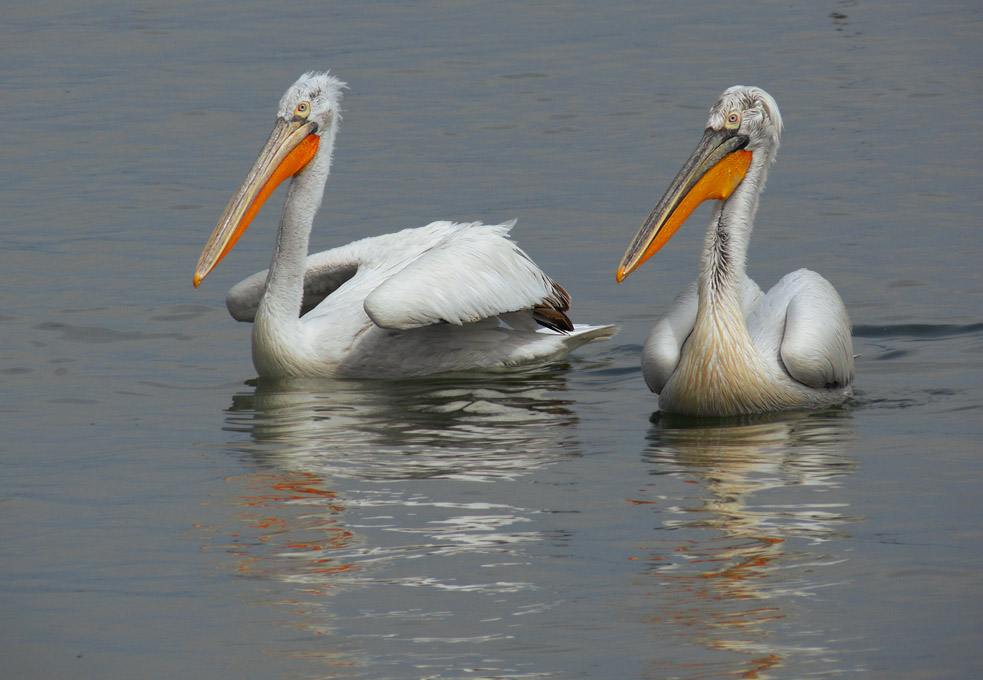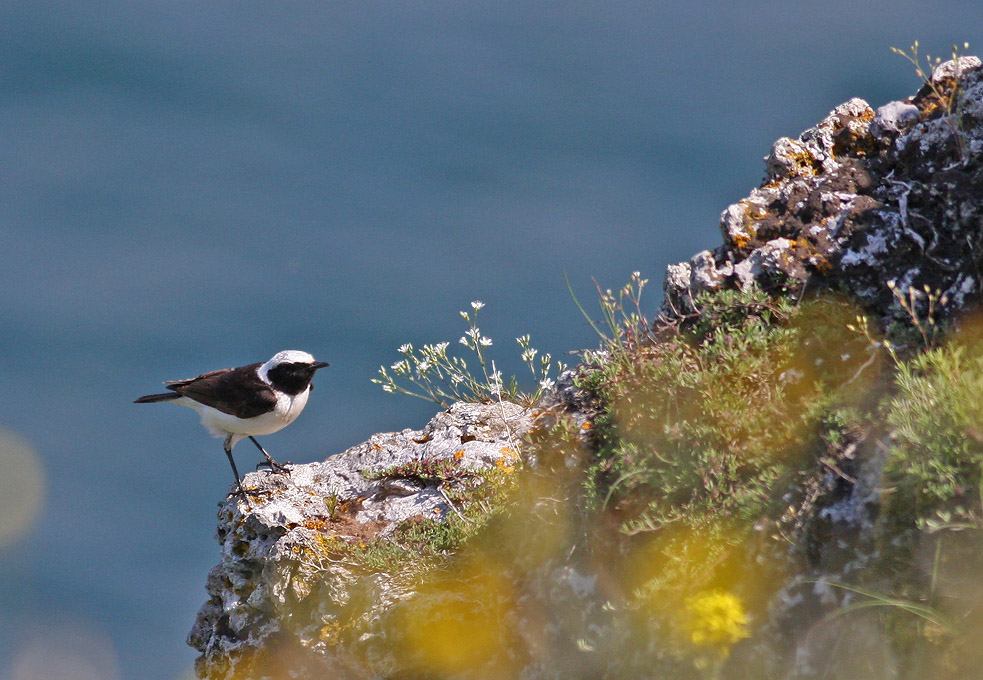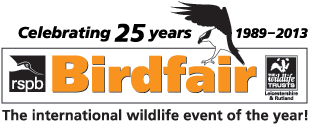 Dalmatian Pelican © L.Hristov
Dalmatian Pelican © L.Hristov
 Pied wheatear © J.Lidster
Pied wheatear © J.Lidster
8 days
28 April 2025 -
05 May 2025
Tag 1
Landing at Varna airport and transfer village of Vetren, located in the immediate vicinity to the Danube and the world famous reserve ‘Lake Srebarna’. It is under the aegis of UNESCO as a monument of the World Cultural and Natural Heritage. Accommodation at Pelican Birding Lodge for 5 nights.
Tag 2
All day long we’ll be in the region , making observations around Srebarna lake reserve. Possible bird species for the day : Dalmatian Pelican, Ferruginous duck, Pygmy cormorant and a number of other more or less rare birds like Red-necked and Black-necked Grebes, Purple, Squacco and Night Herons, Marsh Harrier, Penduline Tit , Lesser Spotted Eagle, Levant Sparrowhawk, Goshawk, Ruddy Shellduck also breeds in the banks of the small dry valleys around the lake. In the afternoon we will visit the Danube river proper. Birds likely to be seen there: Dalmatian Pelicans, Herons, Woodpeckers.
Tag 3
After breakfast, we set off for the rocky canyon of the Souhata Reka (i.e. the dry river). This is a limestone region with vertical cliffs sinking directly down to the river valley. The cliffs themselves are perforated by a great number of rock niches and caverns, which in the distant past gave shelter to the early Christians in these lands, and today they are inhabited by interesting bird species like the Black Stork, Short-toed Eagle, Long-legged Buzzard, Booted Eagle, etc. We are going to see smaller birds like Roller, Hoopoe, Bee-eater, Golden Oriole, Barred Warbler and many other species of birds.
Tag 4
Today, we will visit a quite new nature reserve and, perhaps for this reason, in perfect state. It gives shelter to such interesting species of birds like White-winged Black-, Black- and Whiskered Terns, Red-necked- and Black-necked Grebes, almost all of the European herons and egrets, Great Reed Warbler and many other species. This is the marsh ‘Nova Cherna’. During the trip to the marsh, we will visit some other, smaller water bodies where, hopefully, we will see Ruddy Shelduck, and in their vicinities Booted Eagle, Honey Buzzard, Lesser-spotted Eagle (Aquila pomarina) and other raptors.
Tag 5
It is time to visit the rocky valley (canyon) of river Roussenski Lom. This area is a nature park, and its beautiful riverside terraces, tall cliffs, caves, rock formations, high biodiversity and many historical monuments make it an exceptionally interesting destination for visitors. The combination between rocks, forests, rivers, caves and meadows lies at the root of its very high indeed biodiversity: the flora of nature park ‘Roussenski Lom’ numbers 902 species. Its fauna is represented by 10 species of amphibians (of which 5 are protected), 19 species of reptiles, 22 species of fish, 66 species of mammals. Perhaps its greatest wealth is the birds: 190 species, of which 109 species breed within the park boundaries. We will hopefully see Black stork, Long-legged Buzzard (Buteo rufinus), Levant Sparrowhawk (Accipiter brevipes), Egyptian Vulture (Neophron percnopterus), Honey Buzzard , Lon- legged Buzzard and many other species of birds
Tag 6
Today, we will leave the Danube riverside and head east for the Northern Black Sea coast. During the transfer, we’ll stop for watching birds and, hopefully, we will see Black headed and Ortolan bunting, Lesser Grey Shrike. Around noon we’ll have already arrived at the coast and will immediately head for the nature reserve ‘Kaliakra’ and the rocky canyon called Bolata for watching birds. Cape Kaliakra Steppe Nature Reserve is a coastal headland. Its white and reddish cliffs descend precipitously into the depths of the sea from a height of over 200 m. Inland, the sky above the rolling steppe is dotted with slow-flapping Calandra and Short-toed Larks. The habitat also suits Isabeline and Pied Wheatears and Stone Curlew. Almost everywhere, perched on small shrubs we can see Lesser Grey- and Red-backed Shrikes, Black-headed- and Corn Buntings, Pied Wheatear. We hope to see also Rosy starlings. Bolata is a rocky limestone canyon on the bottom of which runs a small rivulet, forming similarly small marsh, then continues to run out of it and flows into a little bay of the sea. The rock walls of the canyon are perforated by a great number of caves, which give shelter to many mammals, reptiles and birds like the Eagle Owl for instance. In the late afternoon, we will put up at a local hotel in the town of Kavarna for 2 nights.
Tag 7
After an early breakfast follows a visit to Dourankoulak lake. It’s a very important wetland area for the breeding, migrating and wintering birds with its extensive reed-beds and open-water area. Here we will be most interested to spot Paddyfield Warbler, Collared Pratincole, Pygmy Cormorant, Glossy Ibis, Spoonbill, Ferruginous Duck, Gull-billed- and Caspian Terns, Red-footed Falcon, Long-legged Buzzard. After the packed lunch we’ll visit Kaliakra steppe reserve region. This is a coastal headland. Its white and reddish cliffs descend precipitously into the depths of the sea from a height of over 200 m. Inland, the sky above the rolling steppe is dotted with slow-flapping Calandra- and Short-toed Larks. The habitat also suits Isabeline- and Pied Wheatears and Stone curlew. Almost everywhere, perched on small shrubs we can see Lesser Grey- and Red-backed Shrikes, Black-headed- and Corn Buntings. This is also the region where sometimes the Rose-coloured Starlings appear during their periodic invasions.
Tag 8
After final observation in the region a transfer to Varna airport follows, where our tour ends.
8 days
28 April 2025 -
05 May 2025
Pelican Birding Lodge tour. www.pelican-birding-lodge.com Bulgaria, with its biodiversity, is indeed a unique land. Within its borders and during certain periods of the year one can watch at one and the same time both Mediterranean species of birds and birds that nest in the far-away Siberia. We will visit many marshes and lakes, the riversides of the majestic river Danube, and the ancient Black Sea . Apart from the beautifully looking Golden Oriole, Bee-Eater, Roller, Hoopoe, Dalmatian and White Pelicans, Black and White Storks, Pygmy Cormorant, Ruddy Shelduck, Ferruginous Duck, all species of European Herons, Egrets and Bitterns (except the Cattle egret), Black- and White-winged Terns. Also, large birds of prey like Lesser Spotted Eagle, Short-toed Eagle, Booted Eagle, White-tailed Sea Eagle, Long-legged Buzzard, Honey Buzzard, Levant Sparrowhawk, Woodpeckers, Black-headed and Ortolan Buntings , Isabeline and Pied Wheatears, Paddifield Warblers, Motacilla feldegg / Balkan Black-headed Yellow Wagtail / and many, many others.
Sprachen
English
Größe der Gruppen
5 - 15
Individuelle Tour
2 - 4
Wetter
Daily temperatures are almost always above 20C. Rainfalls possible, but as a whole it is a fair, sunny and steady weather. Depressions occur very rarely and then temperatures fall down to 15C.
Bekleidung
Clothes appropriate for the season, wind-proof jackets and a pair of good walking shoes. Yet bear in mind the there is a possibility of the temperatures in late spring to fall. It wouldn't be bad to take your sunglasses and even a hat.
Wanderstrecken
3-4 km per day
verfügbar28 April 2025 - 05 May 2025
PREISE OHNE FLUG
€1,000.00
ZUSCHLAG EINZELZIMMER
€140.00
ANZAHLUNG
€150.00
INDIVIDUELL
€1,100.00
ZUSÄTZLICHE PREISINFORMATION
Payment may be made in all convertible currencies at the Euro exchange rate for the day of payment. The prices include : All the ground transport, FB – full board with packed lunches, where is necessary, accommodation in hotels and guest houses. English speaking guide, All the taxes for reserves. The prices don’t include : Insurance, drinks, and all the items of personal nature




